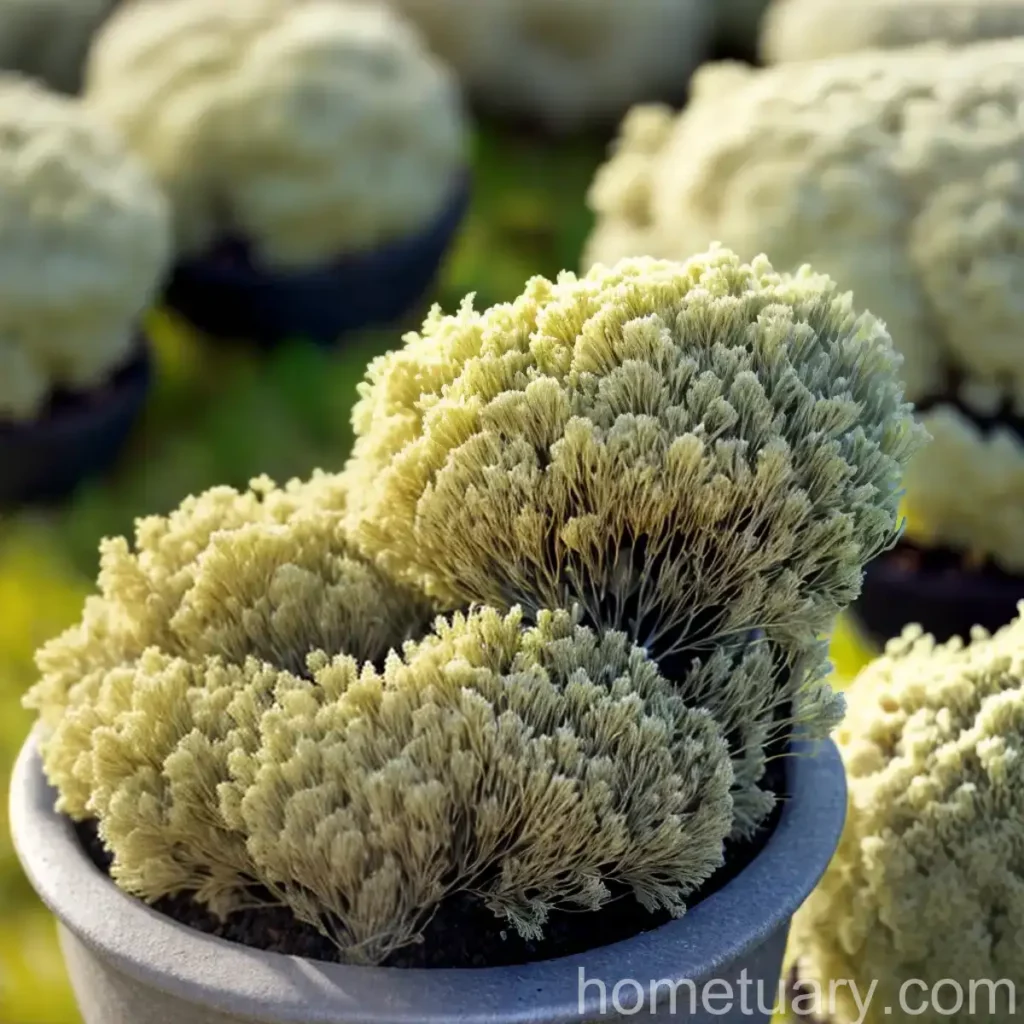Scotch Heather (Calluna vulgaris ‘Spring Torch’)
Scotch heather, scientifically known as Calluna vulgaris ‘Spring Torch’, is a charming perennial plant that belongs to the Ericaceae family. It is a celebrated plant in the gardening world, prized for its vibrant and long-flowering display, along with its versatility in various landscape settings. The ‘Spring Torch’ variety is particularly admired for its striking fiery red foliage, adding an eye-catching pop of color to gardens and containers.
In this comprehensive guide, we will delve into the various aspects of Scotch heather care, cultivation, and maintenance. Whether you are an experienced gardener or a novice enthusiast, this article is designed to provide you with valuable insights into nurturing and enjoying the beauty of Scotch heather in diverse gardening scenarios.
Key Takeaways – Scotch Heather (Calluna vulgaris ‘Spring Torch’)
- Scientific Name: Calluna vulgaris ‘Spring Torch’
- Family: Ericaceae
- Common Name: Scotch Heather
- Variety: Spring Torch
- Landscape Uses: Gardens, Containers, Landscaping, Rock Gardens, Wildlife Gardens, Mixed Borders, Erosion Control
- Sunlight: Full sun to part shade
- Watering: Moderate to low
- Soil: Well-draining, acidic soil
- Fertilizer: Minimal requirements
- Pruning: Annually after flowering
- Propagation: Softwood cuttings
- Common Diseases: Phytophthora root rot, Rhizoctonia root rot
- Common Pests: Aphids, Spider Mites
- Toxicity: Non-toxic to humans, may cause mild stomach upset in pets if ingested
Now, let’s explore each of these aspects in detail to understand how to care for and make the most of Scotch heather in your garden or landscape.
What is Plant: Scotch Heather (Calluna vulgaris ‘Spring Torch’)
Scotch heather, or Calluna vulgaris ‘Spring Torch’, is a compact, low-growing woody perennial shrub that is renowned for its profusion of tiny floral spikes and ever-changing foliage colors. Originating from the moorlands of Europe and Asia, this hardy plant has found its way to gardens and landscapes worldwide, offering an array of cultivars known for their unique and alluring characteristics.
Culture
The culture of Scotch heather encompasses its overall growth habits, landscape uses, and aesthetic contributions to various settings. The ‘Spring Torch’ variety, in particular, is highly esteemed for its vibrant foliage and long-lasting blooms, making it a captivating addition to both traditional and contemporary garden designs. Its compact growth habit and colorful display make it suitable for borders, rockeries, containers, and mass plantings.
Uses
Calluna vulgaris ‘Spring Torch’ boasts an array of uses in the landscape, thanks to its enchanting aesthetic attributes, and its adaptability to diverse growing conditions. From adding a splash of color to rock gardens to serving as an effective ground cover, Scotch heather has proven to be a versatile and invaluable plant.
Water
Scotch heather has modest water requirements, preferring consistently moist but not waterlogged soil. Adequate moisture is crucial during its establishment phase and periods of prolonged drought. However, it’s important to avoid overwatering, as excessive moisture can lead to root rot and other detrimental effects on the plant’s health. When watering, it’s advisable to apply water at the base of the plant to prevent moisture-related diseases.
Sunlight
The ‘Spring Torch’ variety of Scotch heather thrives in full sun to partial shade conditions. However, it tends to exhibit the most vibrant foliage coloration when grown in locations with ample sunlight. In regions with scorching summers, providing some afternoon shade can help prevent leaf scorch and maintain the plant’s overall health and appearance.
Fertilizer
Scotch heather is not a heavy feeder and generally thrives in nutrient-poor soils that are acidic in nature. When necessary, a light application of a balanced, acidic fertilizer in spring can support healthy growth and flowering. However, it’s important to exercise restraint when fertilizing, as excessive nutrients can lead to overly lush growth and diminished flowering.
Soil
Well-draining, acidic soil is essential for the successful cultivation of Scotch heather. It prefers soils with a pH range between 4.5 and 5.5, which emulates its natural habitat in moorlands and heathlands. Additionally, incorporating organic matter such as peat moss can enhance soil structure and acidity, providing an optimal growing medium for the plant.
Pruning
Pruning is a crucial aspect of Scotch heather maintenance, aiding in the rejuvenation of the plant, the promotion of bushy growth, and the removal of spent flowers. Typically, pruning should be carried out in late spring or early summer, after the plant has finished flowering. This involves trimming back the spent floral spikes and lightly shaping the plant to maintain its form and density.
Propagation
Propagation of Scotch heather, particularly the ‘Spring Torch’ variety, can be accomplished through softwood cuttings. This method involves taking young, tender shoots and rooting them in a well-draining rooting medium. With proper care and favorable conditions, these cuttings can develop into vigorous, new plants, allowing for the expansion of your Scotch heather collection or the sharing of plants with fellow gardening enthusiasts.
Container Popularity
Scotch heather, especially the ‘Spring Torch’ cultivar, enjoys great popularity in container gardening due to its compact size, colorful foliage, and ability to thrive in confined spaces. When grown in containers, it can serve as a focal point on patios, decks, and balconies, adding a touch of elegance and natural beauty to outdoor living areas.
Container Common Diseases
When growing Scotch heather in containers, it’s essential to be aware of potential diseases that may affect the plant. Primarily, issues such as Phytophthora root rot and Rhizoctonia root rot can pose risks to container-grown Scotch heather. To mitigate these risks, utilizing well-draining potting mixes, maintaining proper moisture levels, and providing adequate air circulation can help safeguard the plant’s health.
Disease Diagnosis
Diagnosing diseases in Scotch heather, including the ‘Spring Torch’ variety, involves identifying symptoms such as wilting, discoloration, stunted growth, and dieback. Careful observation and prompt action are essential in addressing potential diseases, and consulting with local extension services or plant pathology experts can provide valuable insights and solutions.
Common Pests
While Scotch heather is relatively resistant to many pests, occasional infestations of aphids and spider mites can occur, particularly in stressed or poorly growing plants. Regular monitoring of the plant’s health, maintaining proper cultural practices, and employing targeted pest control measures when necessary can effectively manage pest populations.
Botanist’s Tips
As an esteemed and cherished plant species, Scotch heather, specifically the ‘Spring Torch’ variety, benefits from a few key botanist’s tips to ensure its optimal growth and performance:
- Acidic Environment: Ensuring that the plant is situated in acidic soil conditions, mimicking its natural habitat, is crucial for its long-term health and vitality.
- Proper Pruning: Annual pruning after flowering helps maintain the plant’s compact form, encourages fresh growth, and supports abundant flowering in subsequent seasons.
- Appropriate Drainage: Whether planted in the ground or in containers, Scotch heather thrives in well-draining soils, emphasizing the importance of good drainage for its overall well-being.
Fun Facts
Embracing the captivating allure and fascinating nature of Scotch heather, here are some intriguing fun facts about the ‘Spring Torch’ variety and the broader Calluna vulgaris species:
- Seasonal Interest: The ‘Spring Torch’ cultivar offers stunning seasonal interest, with its fiery red foliage transitioning through various shades during the year, creating an ever-changing visual display.
- Wildlife Appeal: Scotch heather, when planted in naturalistic settings, attracts various pollinators, including bees and butterflies, contributing to the ecological diversity of the area.
Links to External Resources
For further exploration and in-depth knowledge about Scotch heather, Calluna vulgaris ‘Spring Torch’, and related topics, the following external resources provide valuable insights and guidance:
- Royal Horticultural Society – Calluna vulgaris
- University of Maryland Extension – Growing Heather
- Missouri Botanical Garden – Calluna vulgaris
- American Rhododendron Society – Heather and Heaths
- The Heather Society
- Penn State Extension – Growing Heather in the Garden
By exploring these resources, you can gain a deeper understanding of Scotch heather, its cultivation, care practices, and the broader ecological and horticultural significance of this remarkable plant.
In conclusion, Scotch heather (Calluna vulgaris ‘Spring Torch’) stands as a symbol of enduring beauty, resilience, and horticultural significance, captivating gardeners and enthusiasts with its captivating foliage and floral displays. As you embark on your journey of caring for and appreciating Scotch heather, may this guide serve as a source of inspiration and knowledge, empowering you to cultivate and enjoy the timeless allure of this esteemed plant. Whether adorning a garden border, embellishing a container, or enhancing a wildlife habitat, Scotch heather continues to enchant and enrich our natural environments, embodying the essence of botanical wonder and admiration.















